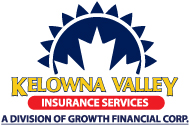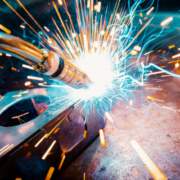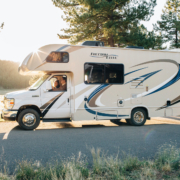Hot Work Hazards – Are You Protected From Potential Losses?!
Does your business perform hot work? Make sure you’re covered in the face of various serious hazards and potential losses.
If we talk about the leading causes of fire in our country, among the top three reasons for mid-size industrial or commercial property losses is due to hot work activities on the premises.
For the uninitiated, hot work is any occupation that includes work with sources of ignition – welding, soldering, grinding, cutting, etc. – close to flammable or combustible materials. These include flammable gases or liquids, sawdust, and wood structures, for example. When you work with a source of ignition near these materials, which for many businesses is often inevitable, there’s a greater risk of fire or even possibly explosion.
Not surprisingly, there are inherent hazards associated with spark-producing operations. And it accounts for significant losses to and of property every year. But, the loss is preventable. There are effective safety protocols and procedures that, if in place and utilized effectively and with consistency, can help reduce the hazards significantly.
Never underestimate the hazard of one small spark!
If your business involves frequently working with sources of ignition – hot work – chances are you already have a designated area where the activities take place. Why a designated location? Because it takes but one small spark to cause devastation.
Only one spark can cause a fire that destroys equipment and property, not to mention the costly interruption of business, causing the loss of jobs and revenue. Even worse, a fire caused by a simple spark puts lives at risk. After a devastating fire, as the business tries to recover, it can lose valuable customers to its competitors in the same market. It only takes a moment for a fire to take hold, yet the damage can be overwhelmingly long-term.
Reduce the possible risks of hot work
Don’t think that a stray spark immediately turns into a devastating fire. Not at all. In fact, it will sit for hours in a hospitable, flammable environment and smoulder until it comes to life hours after your team has left for the night.
That’s when the destruction occurs unhindered.
That said, there are best practices to ensure that spark-producing activities don’t result in an unseen spark left to grow into a fire:
- Check all equipment to ensure that they are properly operational before you do any work.
- Inspect the hot work area thoroughly before any work begins. Are there flammable or combustible materials or surfaces close to the work area (walls, beams, posts, partitions, ceilings, etc.)? If so, cover them with a material that is fire-resistant and heat-insulating to prevent them from overheating and igniting.
- Check that you have fire extinguishers nearby, within easy access, and are functional.
- Use all recommended personal protective devices. They should be easy to access and available at the worksite. Train your staff on how to use them and that they are always clean and stored safely and appropriately.
Inspect the work zone for flammables and combustibles
- Keep all combustibles away from the zone of hot work as much as possible.
- If you can’t clear combustibles out of the area, cover them with fire-resistant blankets or shields. Cover or shield any equipment and gas lines in the space from stray and airborne hot debris or sparks.
- Keep the floor of the work area and surroundings tidy of any combustible materials. If the floors are potentially combustible, try to keep them damp or cover them with fire-resistant blankets. NOTE: To prevent electrical shock, don’t use water if electrical circuits are energized.
- Sparks must stay out of any ducting. Keep duct openings or other ductwork clean of combustible debris. Seal any cracks in ducts. If there are cracks in ducts, seal them. Cover any duct openings with a fire-resistant barrier.
- Clean up spilt grease, oil, or other flammable liquids.
- Keep a well-stocked first-aid kit nearby and easy to access.
- Learn about more best practices HERE.
A dedicated fire watch is critical
An appropriately and safely prepared hot work zone includes a dedicated fire watch when the spark-producing activity is complete. After any work that produces heat and sparks – welding, soldering, grinding, etc.
For the hours that follow any flammable work, assign a team member to inspect the zone and surrounding area for sparks, visible and hidden, that could settle and smoulder to ignition. Missing an inspection after hot work poses a potentially catastrophic hazard. Pay a relevantly trained employee to keep an eye on the area – a worthwhile expense given the destruction and cost if you don’t.
If you can’t keep a dedicated fire watch for the hot work zone, limit hot work to earlier in the day as much as possible. That should give time to find any stray sparks smouldering during working hours. Monitor for about one to four hours after the work’s completion.
Use a hot work permit
A hot work permit protocol helps to reduce the associated hazards. A helpful and essential two-part tag system, the hot work permit requires the worker to complete a safety checklist before they perform any hot work, even beyond your dedicated hot work zones. At the beginning of any hot work, they affix one part of the two-part tag close to their work area. It remains there until the fire watch is complete. The other portion stays on file, audited by management.
The permit system ensures the individual performing the hot work follows the appropriate safety protocols. It requires they sign off on a checklist before working and after the fire watch is complete. A hot work permit is available for purchase from most retailers of safety supplies.
Spark-producing activities safety program
Include a safety program specific to spark-producing operations in your larger safety program. It should include the use of hot work permits. The safety protocols include all spark-producing operations that occur onsite, no matter who does it, your staff or third-party contractors.
Don’t make it complicated! The hot work part of your plan is only a page or two to identify the unique safety specifics pertaining to spark-producing activities.
We specialize in group and union member insurance. If you are an existing or retired union member in BC, we can get you the best rates.
Wondering if your business doing hot work might impact your commercial insurance? Talk to us!





